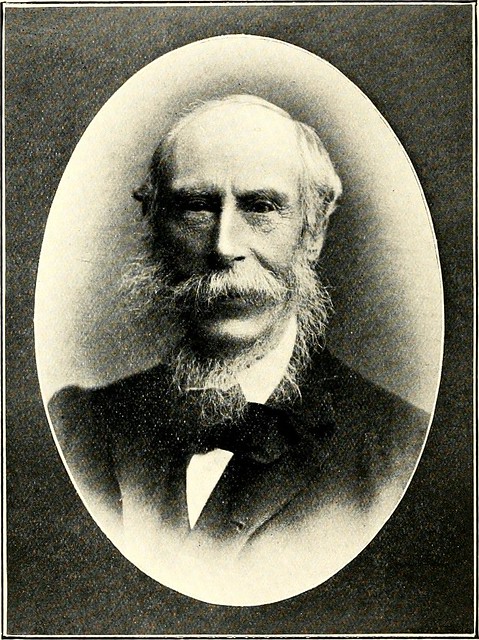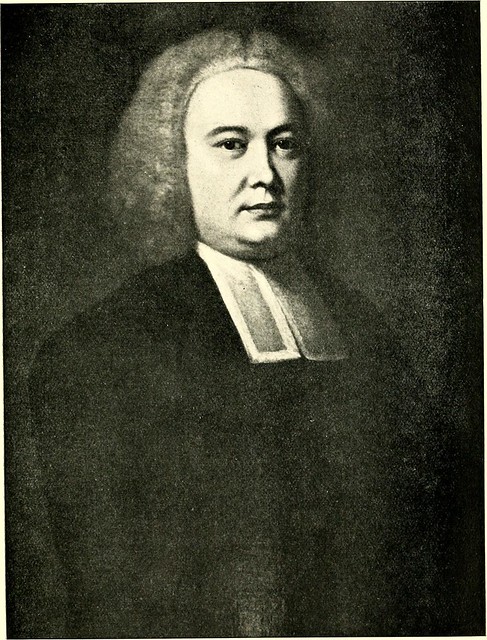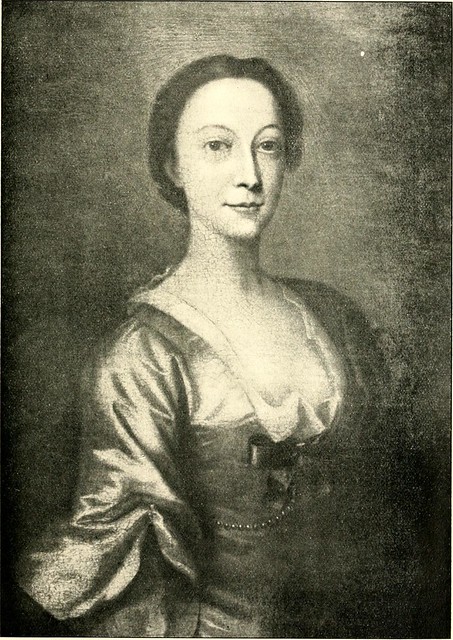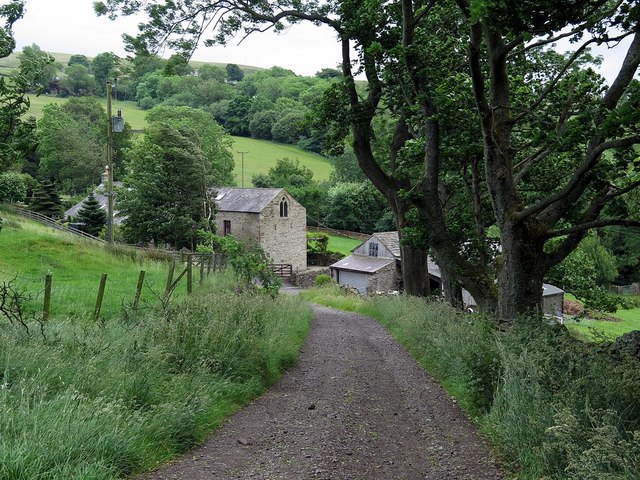Topics > People in History > Wilfred H. Hudleston (1828 - 1909)
Wilfred H. Hudleston (1828 - 1909)
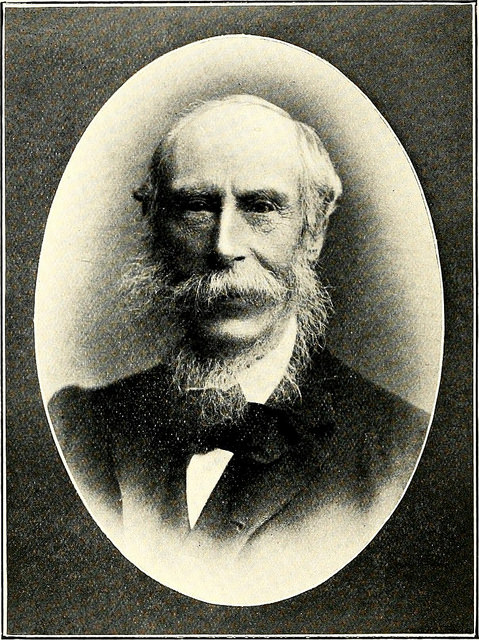 Wilfred Hudleston Hudleston was a noted geologist. He was born in York in 1828 and spent most of his professional career based in London and Dorset. As an active member of the Geologists' Association, he served as secretary (1874-1877), and as president (1881–1883). In 1884, Hudleston was elected Fellow of the Royal Society. Later, was secretary of the Geological Society of London (1886–1890), and it's president (1892-1894). He published widely, including a paper, with the Rev. J. F. Blake, on the Corallian rocks of England. Hudleston was honoured with the Geological Society's Wollaston Medal in 1897.
Wilfred Hudleston Hudleston was a noted geologist. He was born in York in 1828 and spent most of his professional career based in London and Dorset. As an active member of the Geologists' Association, he served as secretary (1874-1877), and as president (1881–1883). In 1884, Hudleston was elected Fellow of the Royal Society. Later, was secretary of the Geological Society of London (1886–1890), and it's president (1892-1894). He published widely, including a paper, with the Rev. J. F. Blake, on the Corallian rocks of England. Hudleston was honoured with the Geological Society's Wollaston Medal in 1897.
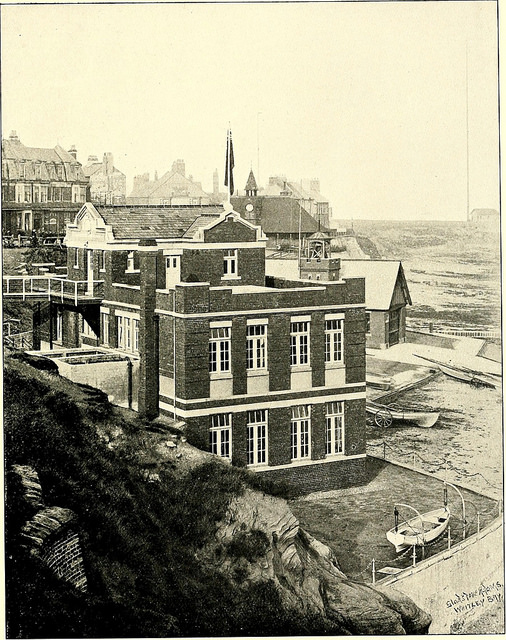 Northern Connections: Wilfred's mother was an heiress of an estate at Hutton John, Cumberland. He also inherited land in Cullercoats, Northumberland - the Reverend Curwen Hudleston had married Elanor Dove; the Dove family of Sparrow Hall owned land at Cullercoates and prospered from the coal mining there. Wilfred was involved, with establishing a marine laboratory in Cullercoats in 1897. Then in 1906 he donated land for a larger replacement building in Cullercotes Bay - the Dove Marine Laboratory, named after his ancestor Elanor Dove, which today is part of Newcastle University.
Northern Connections: Wilfred's mother was an heiress of an estate at Hutton John, Cumberland. He also inherited land in Cullercoats, Northumberland - the Reverend Curwen Hudleston had married Elanor Dove; the Dove family of Sparrow Hall owned land at Cullercoates and prospered from the coal mining there. Wilfred was involved, with establishing a marine laboratory in Cullercoats in 1897. Then in 1906 he donated land for a larger replacement building in Cullercotes Bay - the Dove Marine Laboratory, named after his ancestor Elanor Dove, which today is part of Newcastle University.
Wilfred Hudleston Hudleston FRS (né Simpson) (2 June 1828 – 29 January 1909) was an English geologist.
Life
Hudleston was born at York on 2 June 1828. He was the eldest son of John Simpson of Knaresborough (the third in succession to practise medicine) and Elizabeth, daughter of Thomas Ward of Dore House, near Handsworth. His mother was an heiress through her mother, Eleanor Hudleston (died 1856), of the family of Hudleston of Hutton John, Cumberland. Wilfred, who with the rest of his family assumed the surname of Hudleston by royal licence in 1867, was educated first at St Peter's School, York, and afterwards at Uppingham, proceeding to St John's College, Cambridge, where he graduated B.A. in 1850 and M.A. in 1853.
At Cambridge, he was interested chiefly in ornithology, which he had begun to study at school. In 1855 he spent a summer in Lapland, collecting with Alfred Newton and John Woolley. After visiting Algeria and the eastern Atlas with Henry Baker Tristram and Osbert Salvin, he spent more than a year in Greece and Turkey adding to his collections. From 1862 to 1867, he systematically studied natural history and chemistry, attending courses of lectures at the University of Edinburgh, and afterwards at the Royal College of Chemistry in London. Undecided at first whether to make chemistry or geology his chief subject, he was drawn to the latter by the influence of John Morris.
Settling in London, although he lived part of the year on property at West Holme, Dorset, and at Knaresborough, he began his career as a geologist. Engaging actively in the work of the Geologists' Association, he served as secretary from 1874 to 1877, and supplied many reports of their excursions. He was president of the association (1881–83). He became a fellow of the Geological Society of London in 1867, was secretary (1886–90), and president from 1892 to 1894. He contributed to the society's Journal, among others, a paper (with the Rev. J. F. Blake) on the Corallian rocks of England. Other papers on the Jurassic system appeared in the Geological Magazine, and in 1887 he began to publish in the Palæontographical Society's volumes a monograph on the inferior oolite gastropods, which, when completed in 1896, comprised 514 pages of letterpress and 44 plates. It was largely founded on his own collection of these fossils, which he bequeathed to the Sedgwick Museum, Cambridge.
In 1884, Hudleston was elected Fellow of the Royal Society. In 1886 and the following year he undertook some dredging in the English Channel for mollusca, and aided the foundation of a marine laboratory at Cullercoats, Northumberland. Early in 1895 he made a journey in India, travelling from Bombay as far as Srinagar. Hudleston, who received the Geological Society's Wollaston Medal in 1897, presided over the geological section of the British Association in 1898. He received, with the other three original members, a gold medal at the jubilee of the British Ornithologists' Union in December 1908. He was also a president of the Devonshire Association and other local societies.
In 1906 he funded the construction of what became the Dove Marine Laboratory, now part of the University of Newcastle, after the original site had been destroyed by fire.
Visit the page: Wilfred Hudleston Hudleston for references and further details. You can contribute to this article on Wikipedia.
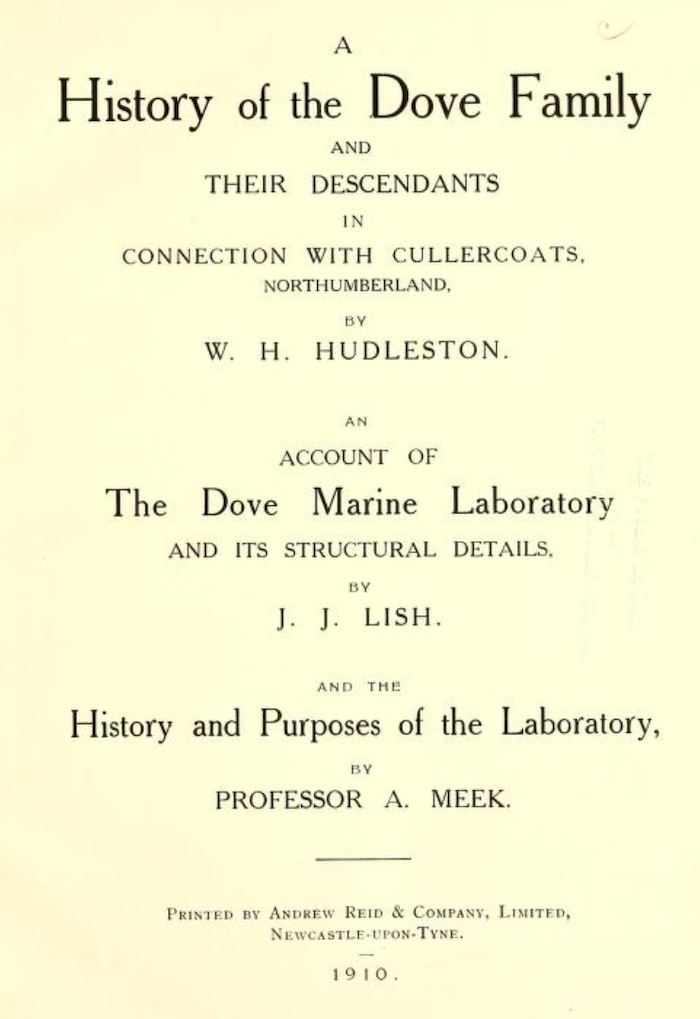
from https://archive.org/stream/hi…
The Dove Marine Laboratory, Cullercoats,and its Structural Details (1910).
- A history of the Dove family : and their descendants in connection with Cullercoats, Northumberland. The Dove Marine Laboratory, Cullercoats,and its Structural Details. History and Purposes of the Laboratory. by …
Added by
Simon Cotterill
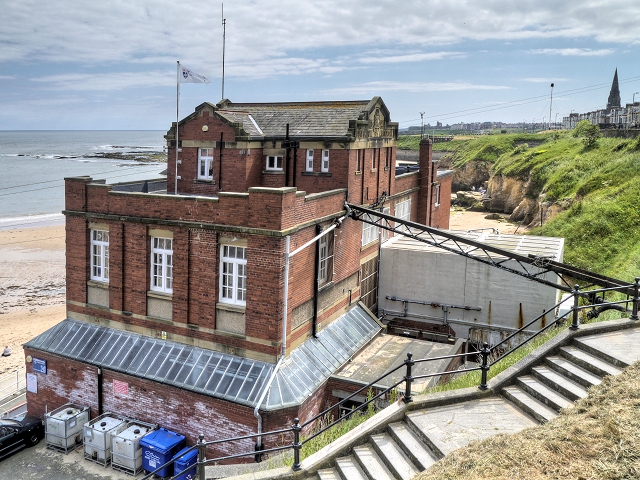
Co-Curate Page
Dove Marine Laboratory
- Overview About Map Street View The first laboratory at Cullercoats was constructed by the Northumberland Sea Fisheries Committee and opened on the 21st of October 1897.[1] It was a small wooden …
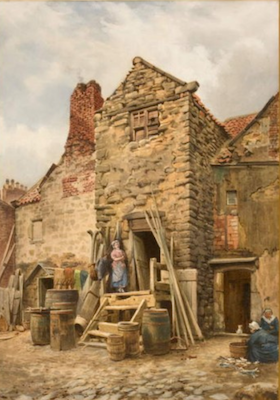
Co-Curate Page
Sparrow Hall
- The Dove family, local coal owners, built a large 3 storey Jacobean house in Cullercoats in 1682. It stood in grounds near to the cliffs and the apex stone of …
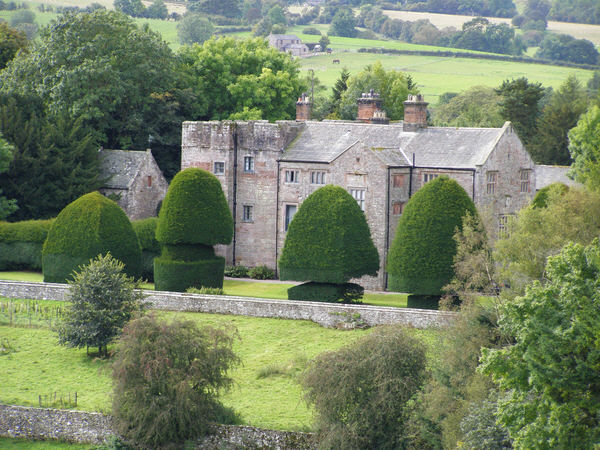
Co-Curate Page
Hutton John
- Overview Map Street View Hutton John is a large fortified manor house, located near the hamlet of Hutton, about 5 miles south-west of Penrith in Cumbria. The manor house was …


from https://archive.org/stream/hi…
The Dove Marine Laboratory, Cullercoats,and its Structural Details (1910).
- A history of the Dove family : and their descendants in connection with Cullercoats, Northumberland. The Dove Marine Laboratory, Cullercoats,and its Structural Details. History and Purposes of the Laboratory. by …
Added by
Simon Cotterill

Co-Curate Page
Dove Marine Laboratory
- Overview About Map Street View The first laboratory at Cullercoats was constructed by the Northumberland Sea Fisheries Committee and opened on the 21st of October 1897.[1] It was a small wooden …

Co-Curate Page
Sparrow Hall
- The Dove family, local coal owners, built a large 3 storey Jacobean house in Cullercoats in 1682. It stood in grounds near to the cliffs and the apex stone of …

